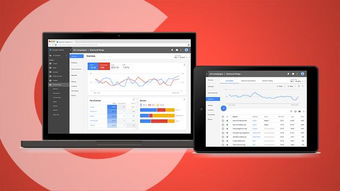Understanding Google AdWords: A Comprehensive Guide

Google AdWords is a powerful tool for businesses looking to increase their online presence and drive targeted traffic to their websites. As you embark on your advertising journey, it’s crucial to have a solid understanding of how AdWords works and how to make the most of it. Let’s dive into the details.
Account Setup and Management

Creating an AdWords account is the first step in your advertising journey. You can either sign up directly through Google or work with an advertising agency. While the latter might cost a bit more, agencies often provide valuable insights and support, especially for beginners.
| Account Setup Method | Description |
|---|---|
| Direct Sign-Up | Sign up directly through Google’s AdWords website. This method is free and gives you full control over your account. |
| Agency Assistance | Work with an advertising agency to set up and manage your account. Agencies can provide expertise and support, but may charge a fee. |
Account Structure

Your AdWords account is structured in a hierarchical manner, starting with the account level, followed by campaigns, ad groups, ads, and keywords. Understanding this structure is essential for organizing and managing your campaigns effectively.
Here’s a breakdown of the account structure:
- Account: The main container for all your campaigns, ad groups, ads, and keywords.
- Campaigns: A collection of ad groups that share a common goal, such as promoting a specific product or service.
- Ad Groups: A set of ads and keywords that are grouped together based on a specific theme or product category.
- Ads: The actual text, image, or video content that appears to users when they search for relevant keywords.
- Keywords: The terms or phrases that trigger your ads to appear in search results.
Keyword Research and Selection
Keywords are the backbone of your AdWords campaigns. They determine when and where your ads will appear. Conducting thorough keyword research is crucial to ensure your ads reach the right audience.
Here are some tips for effective keyword research:
- Use Google’s Keyword Planner to find relevant keywords and get insights into their search volume and competition.
- Consider long-tail keywords, which are longer and more specific, but often have higher conversion rates.
- Analyze your competitors’ keywords to identify potential opportunities.
Creating Compelling Ads
Your ads are the face of your business to potential customers. Crafting compelling and persuasive ads is essential for driving clicks and conversions.
Here are some tips for creating effective ads:
- Use clear, concise, and compelling headlines to grab attention.
- Incorporate strong call-to-action (CTA) to encourage users to take the desired action, such as visiting your website or making a purchase.
- A/B test different ad variations to determine which performs best.
Budgeting and Bidding
Setting a budget and determining your bidding strategy are critical aspects of managing your AdWords campaigns effectively.
Here are some tips for budgeting and bidding:
- Start with a daily budget that aligns with your advertising goals and adjust as needed.
- Use the manual bidding strategy to set your maximum cost-per-click (CPC) for each keyword.
- Consider using the automated bidding strategy to let Google optimize your bids for you.
Monitoring and Optimizing Your Campaigns
Monitoring and optimizing your AdWords campaigns is an ongoing process. Regularly reviewing your campaign performance and making adjustments as needed will help you achieve the best results.
Here are some tips for monitoring and optimizing your campaigns:
- Use the AdWords reporting tools to track your campaign performance, including clicks, impressions, and conversions.
- Analyze your keyword performance and adjust your bids accordingly.
- Update your ads and landing pages regularly to keep them fresh and relevant.



